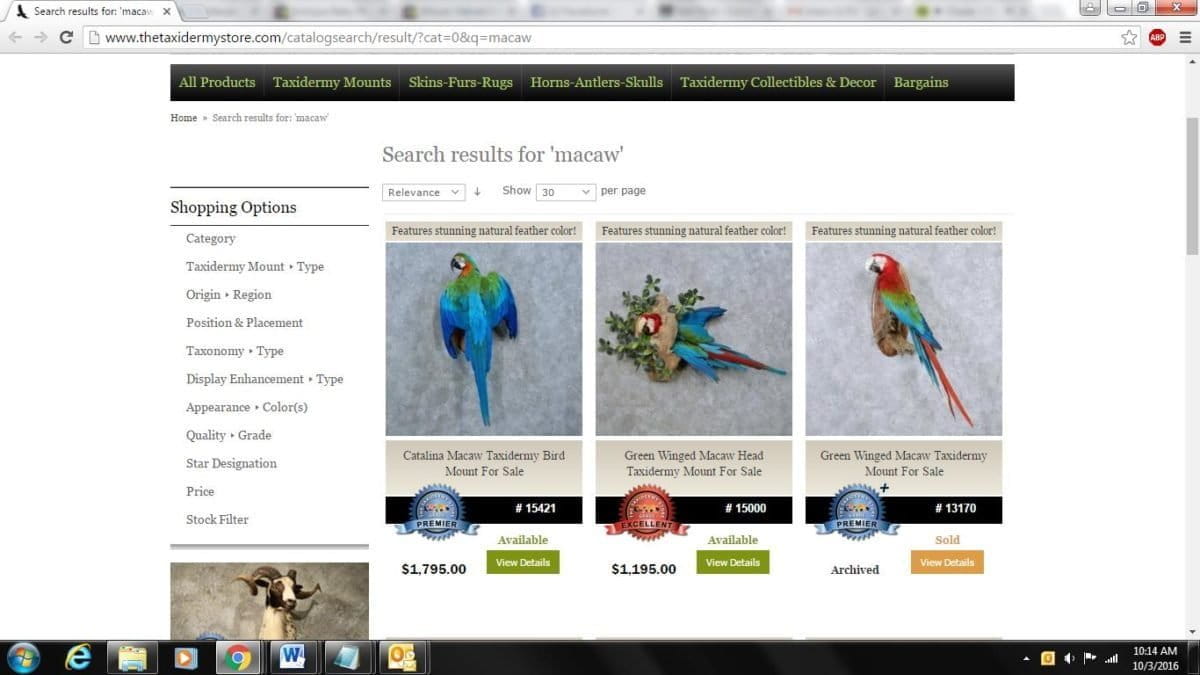- Enforcement Gaps Interface (EGI) uses a computational algorithm to mine hundreds of commercial sites for ads potentially containing illegal wildlife and wildlife products.
- EGI aims to help law enforcement agencies, retailers and nongovernmental organizations reduce and ultimately eliminate rampant online wildlife trafficking.
- EGI’s creators are further developing it to incorporate more languages and image recognition into its searches.
Remember that endangered anteater-esque ball of scales from Favreau’s recent film, The Jungle Book? That’s the pangolin, the world’s most trafficked mammal. Over one million pangolins have likely been poached and illegally traded in the last decade, especially because of their importance in Chinese medicine and food. And the internet hasn’t exactly helped its plight. As wildlife trade monitoring network TRAFFIC reports, their researchers investigated 39 Chinese e-commerce websites over June and July 2016; a single survey in the first month alone detected 153 ads for pangolin scales and meat and live specimen from 94 traders across six sites.
Virtual wildlife trafficking poses a serious threat to not just the pangolin. The online market facilitates the illegal trade in the 5,600 animal and 30,000 plant species listed in the Convention on the International Trade in Endangered Species of Wild Fauna and Flora (CITES). The sellers and buyers who engage in these unlawful transactions are often driven more by ignorance of the trade restrictions and environmental implications than by malice. All the same, the World Wide Web harbors a major and growing network of such criminal activity by providing offenders with a largely unregulated channel that’s anonymous and often clandestine yet easily accessible, speedy, cheap and business-friendly.

But perhaps not for long. Enter Enforcement Gaps Interface (EGI), a cutting-edge tool that uses a computational algorithm to mine hundreds of commercial sites on the open web for ads potentially containing illegal wildlife and wildlife products. It aims to help law enforcement agencies, retailers and nongovernmental organizations reduce and ultimately eliminate this rampant online trade.
“[With] a lot of the wildlife for sale online, [it] is so difficult to tell whether or not it’s illegal. The only thing you can do is trust what the retailer’s saying; we already know that’s not a great idea,” said co-creator Jennifer Jacquet, Assistant Professor of Environmental Studies at New York University (NYU). “We think we could give enforcement or retailers a best guess with high, medium, low certainty that the product for sale is potentially illegal.”
Mining virtual marketplaces for illegal wildlife
So how does EGI work? The software searches for advertisements of products derived from the approximately 700 faunal species on CITES Appendix I. First, the tool crawls the web; the crawler mines sites across the world to collect wildlife listings, including taxidermy mounts, skulls, skins and a surprising number of live animals. Then, using both supervised and unsupervised machine learning algorithms, the system classifies each ad with a probability score; 0.0 means not illegal and 1.0 means extremely illegal. In the final visualization step, EGI places the data and results in the user interface so that users can search and analyze them.

In January 2014, one of Jacquet’s friends, a collector in the UK, had alerted her to a river dolphin skull for sale online. After this, she came across reports from nonprofits’—namely the International Fund for Animal Welfare (IFAW)’s—manual investigations into virtual wildlife trafficking. When she realized how much global manpower and how many weeks it took to scour the internet for illegal wildlife ads, she identified the possibility of automating the search. Funded by NYU’s Center for Data Science, she partnered with Moore-Sloan Post-Doctoral Researcher Sunandan Chakraborty, an expert in text analysis, in the fall of 2015 to bring her idea to fruition. They’re collaborating with IFAW and enforcement agencies like the US Fish and Wildlife Service.
At the moment, the team is still working on gathering and processing data using EGI. At this stage, the technology scans 200 English-language sites using text-based characteristics such as description, price and location. So far, the program has encountered from roughly 500 to over 2,600 potential instances of wildlife trafficking per week. Though Jacquet and Chakraborty have much analysis ahead of them, they’ve already noticed some patterns in the illegal activity they’ve been monitoring. Their findings reveal that the most commonly trafficked species online—both live animals and parts—include the lion, leopard, tiger, lynx, rhino, elk, zebra, ostrich, python, crocodile/caiman/alligator and different kinds of primates. Although virtual wildlife trafficking is a global problem, the United States produced the most number of sales, followed by the United Kingdom; China and Russia were also serious offenders.

Jacquet noted that some internet marketplaces like eBay do block content featuring illegal wildlife and their parts based on the company’s monitoring and alerts from users; however, many such ads slip through the cracks of human observation. Various online detection tools exist for other prohibited activities, such as child pornography and human trafficking, but none before addressed wildlife trafficking. EGI fills in this gap and offers the computational advantage of broader, easier enforcement of CITES.
The challenges of identifying wildlife trafficking online
Even so, at this stage, EGI does face multiple challenges.
For one, it’s very difficult to tell whether an advertised product is illegal.
“You have replicas sold as real stuff, real stuff sold as replicas. You have this classic case where when they outlawed ivory, they changed the sale name to oxbone,” said Jacquet. “You have to incorporate a lot of other factors like price into the model so it becomes aware. Price is one of the main variables we look at because you have pajamas for little kids with tigers all over them; you don’t want that picked up by the algorithm.”
To ensure the system keeps up with traffickers’ attempts to outsmart it, Chakraborty will modify the model to detect new terms for illegal wildlife products.
And although it’ll be tricky, developing machine learning for image recognition will expedite the identification of illegal or fake items.

“Now we’re relying on expertise to say, does this ad look illegal or fake? We want the computer better at that, especially through image recognition,” explained Jacquet. “For instance, if you show it a stuffed animal tiger, even a really expensive one, can it say, that doesn’t look like a real tiger?”
What’s more, although it can be applied to social media sites like Pinterest, Instagram and Twitter, at the moment, EGI can’t access closed virtual spaces on Facebook, WhatsApp and Google Groups. These platforms, where Jacquet understands wildlife trafficking runs rife, would have to elect to use the tool themselves. She noted that people have to draw attention to the issue on these platforms to urge the companies to root it out. For example, eBay started taking down illegal wildlife ads from its pages after multiple NGO reports identified the virtual market as a trafficking channel.
“I have heard that Facebook has committed to commit to reducing wildlife trafficking, but again, I don’t think there’s been any serious action yet,” Jacquet said. “You need people going in undercover as potential buyers or sellers on these sites; that takes a lot of time, energy and delicacy. There’s increasingly a number of people saying Facebook is a problem, WhatsApp is a problem.”
The biggest hurdle facing the project, however, is sifting through sites in multiple languages. The team applied for the Wildlife Crime Tech Challenge—which declared EGI one of four grand prize winners earlier this month—to fund language expertise to investigate Chinese and Russian sites, which Jacquet discusses in the USAID video below. EGI is also working on expanding to European languages like German and Portuguese.
The scientists are also building EGI’s image recognition capability. According to Chakraborty, this feature will help determine the species pictured in ads, as well as discrepancies between the image and text, to see whether the latter misleads.
EGI will become available for use next summer, after the team completes the user interface.
“It’s been really fun working on it even though it’s also really depressing looking at the ads,” reflected Jacquet. “Technology combined with globalization has helped to create a regulatory vacuum, which has increased the international wildlife trade and therefore been bad for wildlife…Our tool can help and make recommendations, but it can only help insofar as the human systems, such as enforcement and politics, use them and act on them.”
